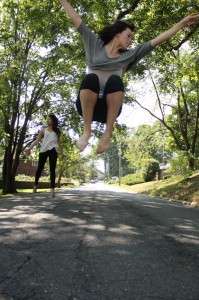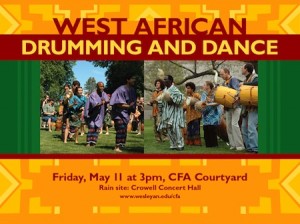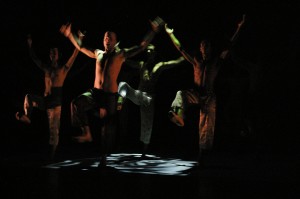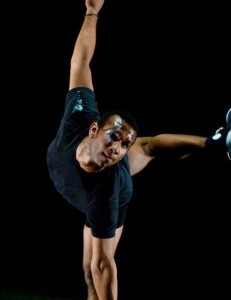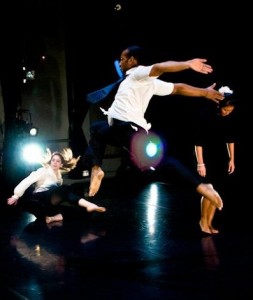![“s[our]ce,” Spring Dance Concert, 2013. Photo by Andrew Ribner '14.](https://creativecampus.blogs.wesleyan.edu/files/2013/05/DSC0819-199x300.jpg)
Each of the nine pieces was very distinct and reflected the unique styles and influences of the choreographers and the dancers. As a dancer myself, and having danced in the Spring Dance Concert in the past, it was interesting to see the final production of creative endeavors by members of the dance community that I know. Spring (and Winter) Dance is a cool process, since many of the pieces are choreographed through joint efforts by each of the dancers in a piece. I was able to see the styles and character of some of my friends infused in each of the pieces.
It is difficult to comment on all of the nine pieces, since they were each so special in their own ways. I will instead talk about some poignant moments that really stuck out to me from several of the pieces. Stellar Levy’s piece, “Love You Infinitely” was interesting and endearing in that it featured many group interactions between dancers. It focused on the awkward and tender moments existing between people, featuring timid interactions, hugging, holding hands, and reaching out to other people. Tess Jonas’ piece contained both a powerful message and powerful movement. It opened with the dancers asking questions to one of the dancers on stage, ending with the question, “do you believe in God?” This question then launched the start of the dance with “God Bless America” playing in the background, and later, voices of kids and of newscast reports blended with the music. The dance delved into how one explores this question given the conflicting influences one receives as a child in school. Miranda Orbach’s piece was simply stunning. The dancers all wore bright red flowy pants; this uniform reflected the dynamism of the piece as well as the unity of their collective movement. In one section of the piece, each of the dancers was lying on their back in a row, with their feet up, while one of the dancers stood, manipulating and moving their legs up and down. This movement pattern resembled the movements of one’s fingers in sign language. Finally, Min Suh’s piece had cool visual effects in which a flashlight and a strobe light were used on an otherwise dark stage to illuminate dancers and to project and enlarge their silhouettes on the wall behind them. The use of darkness also had an interesting effect in that it created a poignant sense of the unknown; you didn’t know what was happening on parts of the stage that weren’t illuminated.
If you haven’t seen any dance events on campus yet, I urge you to do so. The dance community is so talented. Plus, there are so many different types of dance-related events, between Dance Department-sponsored events and performances put on by the many student dance groups on campus. Coming up is the West African Drumming & Dance Concert on Friday, May 10, 2013 at 3pm in the CFA Courtyard (rain location is Crowell Concert Hall). See you there!



